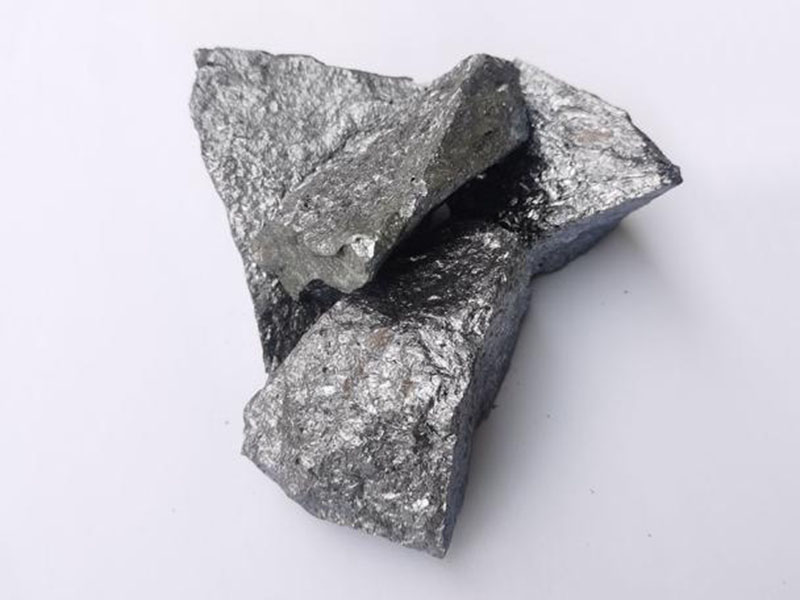Silicon metal, also known as metallurgical silicon, is a product obtained by smelting silicon stone and a carbonaceous reducing agent in an ore-hot furnace. Its main component, silicon, comprises around 98% of the content (recently, products with Si content of 99.99% have also been categorized as metallurgical silicon). The remaining impurities include iron, aluminum, and calcium, among others.

The production process involves three main parts: ore selection, material stone processing, and smelting. Ore selection and stone collection constitute the fundamental and most crucial part of the entire smelting process. The purity and quality of silicon stone directly affect the quality of the final silicon metal product, demanding specific criteria for suitable ore beds and precise mining.
The primary raw materials for silicon metal smelting are crushed silicon dioxide (SiO2) and a carbonaceous reducing agent (mainly composed of anthracite, petroleum coke, charcoal, wood chips, etc.). These materials are used in electric furnaces to reduce silicon dioxide with carbon (reduction reaction: SiO2 + 2C → Si + 2CO). Producing one ton of silicon metal requires approximately 2.7-3 tons of silicon stone, around 2-2.5 tons of reducing agents, and 0.08-0.13 tons of electrodes. The liquid silicon obtained after crude refining, ingot casting, cooling, and crushing packaging is what we commonly refer to as silicon metal.
In China, silicon metal is classified into different grades based on the content of three main impurities: iron, aluminum, and calcium, such as 553, 441, 411, 421, 3303,3305, 2202, 2502, 1501, 1101. For instance, Si5530 implies silicon content ≥98.7%, iron content ≤0.50%, aluminum content ≤0.50%, and calcium content ≤0.30%.
Main Specifications of Metal Silicon:
| Chemical Composition(%) | ||||
| model | Si | Fe | Al | Ca |
| 553# | 98.5%min | 0.5%max | 0.5%max | 0.3%max |
| 441# | 99.0%min | 0.4%max | 0.4%max | 0.1%max |
| 421# | 99.0%min | 0.4%max | 0.2%max | 0.1%max |
| 3303# | 99.0%min | 0.3%max | 0.3%max | 0.3%max |
| 2202# | 99.0%min | 0.2%max | 0.2%max | 0.2%max |
| 1101# | 99.0%min | 0.1%max | 0.1%max | 0.1%max |
Additional products derived from quasi-metallurgical silicon include micro silica powder, edge silicon, black silicon, and silicon slag. Microsilica powder, also known as silica fume, finds wide applications in refractory materials and the concrete industry.
The primary applications of silicon metal include:
Aluminum alloy industry
It’s extensively used in producing silicon-aluminum alloys, the most widely consumed silicon alloys. These alloys serve as potent composite deoxidizers, enhancing deoxidizer efficiency in steelmaking when replacing pure aluminum. They also purify molten steel, elevating steel quality. The demand for silicon metal in industries such as automotive, heavily reliant on aluminum, significantly impacts the market dynamics of silicon metal based on regional or national automotive industry developments.
Non-ferrous alloy additives
silicon metal is employed as a crucial alloying agent for strict requirements in silicon steel and as a deoxidizer for smelting special steels and non-ferrous alloys.
Chemical industry
It’s utilized in producing organic silicon materials like silicone rubber, silicon resin, and silicon oil. Silicone rubber boasts good elasticity and high-temperature resistance, used in manufacturing medical supplies and high-temperature gaskets. Silicon resin is employed in producing insulating varnishes, high-temperature coatings, etc. Silicon oil, with minimal viscosity changes in response to temperature, is utilized in producing advanced lubricants, finishing agents, fluid springs, and dielectric fluids, and can be processed into colorless, transparent liquids used as high-grade waterproof coatings sprayed on building surfaces.
Photovoltaic and electronic industries
Following purification processes, silicon metal yields polycrystalline silicon and monocrystalline silicon, essential for the photovoltaic and electronic industries. Polycrystalline silicon cells are extensively used in solar power systems like rooftop installations, commercial stations, and urban setups with high land costs. They dominate the global photovoltaic market with over 80% market share, substantially accelerating demand for metallurgical silicon. Almost all modern large-scale integrated circuits are produced from high-purity quasi-metallurgical silicon. Moreover, high-purity quasi-metallurgical silicon remains a primary raw material for manufacturing optical fibers, establishing itself as a foundational pillar in the information age industries.
